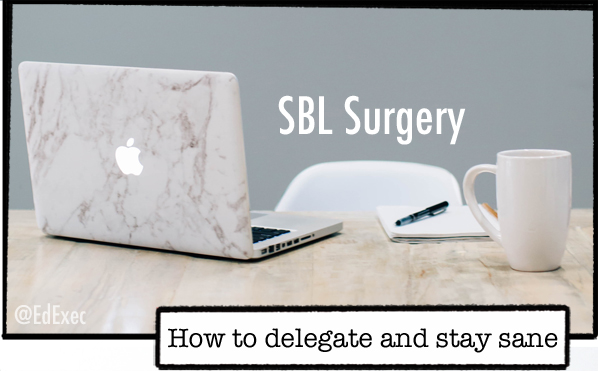When I was appointed as a Chief Operating Officer in a newly formed regional MAT, I thought I knew what I was getting in to. When I wrote my application, I was confident. I had been a PA, LGB Clerk, Office Manager and Business Manager and I had worked across a national MAT leading school improvement, business, HR and governance projects. I’d worked with Senior Leadership Teams, Headteachers, Regional Directors, HR Directors and Finance Directors and I had had front line experience of Ofsted, the DfE and the ESFA.
The role of Chief Operating Officer in a MAT broadly encompasses strategic business and operational leadership, aligning and deploying the resources of the MAT to secure efficiency, effectiveness and the successful achievement of identified objectives. When re-reading my COO application as ‘research’ for this article, I couldn’t help but smile at my boundless optimism and blind determination. I had big plans. I knew exactly what needed to be done and exactly how I would do it. Only now can I see how little I really knew.
The main issue with the role of Chief Operating Officer is that due to its breadth it is difficult to define. It is bespoke to every organisation, context and individual. There are no constants or points of reference and there isn’t a standard job description. This creates both opportunity and ambiguity. For me, taking the role of Chief Operating Officer was the equivalent of jumping off a cliff and finding out I had to make my own parachute on the way down. For everyone who has followed or wishes to follow me over that cliff, here I share with you my five most important lessons:
Find your balance and do it quickly
Being a Chief Operating Officer gives you a completely different and unique perspective on your MAT. You can see everything from where you sit and for that reason you have to operate on parallel tracks; the long-term vision and the day to day. It’s your job to keep those tracks clear of obstacles and as close together as you can as delays and divergence can create chaos. This is the most challenging part of the job. Balancing the needs of the whole with the needs (and wants) of the parts. Knowing when to talk and when to listen, when to intervene and when to escalate and when to enforce and when to mediate requires remarkable judgement and absolute confidence. How well you do this can make or break you.
Credibility is key
It doesn’t matter what your job title is, what qualifications you have or where you sit on the leadership diagram if nobody listens to what you have to say. Without credibility you cannot operate effectively. Credibility is earned, it is not given. How people see you affects how they respond to you. Aligning yourself and the purpose of your role with the educational objectives of your MAT is crucial. As Chief Operating Officer of a MAT, you can’t operate in isolation. Everything you do should be about supporting the delivery of a quality education provision. Articulating your role in these terms as well as demonstrating sound knowledge, a thorough understanding of data, objectivity and empathy will go a long way to gain the confidence and trust of your teaching colleagues.
The ‘big picture’ is deeper and broader than you think
As Chief Operating Officer, you have to use every tool at your disposal to not only determine the way forward but also to forecast impending doom. The management of risk relies on you being as informed as you can possibly be – all the time. Having up to date and accurate information is essential to the decision-making process. Whether you are looking at finance, HR, facilities, service level agreements or pupil progress you need to be confident in the accuracy, consistency and integrity of the data that you receive and the data systems you use. And it doesn’t stop there. You must go on to triangulate everything you think you know. Numbers need narrative and narrative needs numbers. Whilst the destination may be set, the current reality will continue to shift and you will need to be able to split your focus accordingly in order to make truly sound assessments.
Pursue the ground truth of your MAT
A person’s perception is their reality. That means that there are potentially billions of realities out there. This may sound deep but by understanding the realities of your schools and their leaders, you can work to create a shared reality in your MAT. By seeing the world through the eyes of others, you can predict and navigate conflict with ease as well as determine the best way to support and manage change. Not only can ground truth inform your leadership style, it can also be critical when it comes to making informed decisions. Evidence can tell you a lot but intelligence can tell you a whole lot more and can be a real differentiator.
Speak up and say it straight
In your role, you sit to one side of the central accountability line. The Heads report through to the CEO and the CEO reports to the Board. Your role spans across all of these organisational layers and due to the unique perspective we spoke about earlier, the odds are that at some point you are going to see something happening or about to happen that is unacceptable, out of line or potentially apocalyptic. Unfortunately, it will often only be you that can see this happening which means that it is your responsibility to speak up. In these instances you need to be blunt, unequivocal and unwavering. Speaking up may not be pleasant but your insight and your ground truth is one of the most powerful tools that your MAT has.
Despite my steep learning curve, you’ll be pleased to know that I survived my cliff jump and I can honestly say that it was exhilarating, rewarding and satisfying. There’s been a lot of discussion recently about the possible extinction of the MAT business generalist and the increasing preference of the MAT business specialist. My view is that centralisation should not automatically lead to specialisation. The very process of centralisation results in an increase, not a decrease of moving parts, conflicting agendas and accountability. A successful MAT is an efficient and effective operation and nobody is better placed to oversee, manage and shape this operation than a Chief Operating Officer.
So, to those who are thinking of becoming a Chief Operating Officer, I can’t recommend it highly enough. And to those of you who are already, I salute you. Fly the Chief Operating Officer flag and fly it high.
Like what you’ve read? Subscribe to this blog by clicking here.
P.S. Have you joined The Business of School Leadership Facebook Group yet? For practical support, advice, tips, tools & guidance about all things school leadership, join us in the community by clicking here.
Written for: Capita SIMS Blog (@CapitaSIMS)




